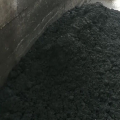|
|
 發表於 2013-7-31 22:29:36
|
顯示全部樓層
發表於 2013-7-31 22:29:36
|
顯示全部樓層
本帖最後由 蘇少儀 於 2013-7-31 08:32 編輯
Acidifiers
Jay Y. Jacela, DVM; Joel M. DeRouchey, PhD; Mike D. Tokach, PhD; Robert D. Goodband, PhD; Jim L. Nelssen, PhD; David G. Renter, DVM, PhD; Steve S. Dritz, DVM, PhD
JYJ, DGR, SSD: Department of Diagnostic Medicine/Pathobiology, Kansas State University, Manhattan, Kansas. JMD, MDT, RDG, JLN: Department of Animal Science and Industry, Kansas State University, Manhattan, Kansas. Corresponding author: Dr Jay Y. Jacela, I-102 Mosier Hall, 1800 Denison Ave, Manhattan, KS 66506; Tel: 785-532-4845; E-mail: jjacela@vet.ksu.edu.
RIS citationCite as: Jacela JY, DeRouchey JM, Tokach MD, et al. Feed additives for swine: Fact sheets – acidifiers and antibiotics. J Swine Health Prod. 2009;17(5):270–275.
--------------------------------------------------------------------------------
Fast facts
Acidifiers used in pig diets may be in organic or inorganic forms.
Acidifiers appear to be most effective in newly weaned pigs and in less complex nursery diets.
Growth-promoting effects of acidifiers in pig diets need to be further investigated to be justified as suitable replacements for antimicrobials.
Beneficial claims from dietary inclusions of acidifiers include control of bacterial growth in feed, increased growth performance, improvement in nutrient digestibility, and control of harmful bacteria in the gut.
What are acidifiers?
Acidifiers are compounds that have acidic properties: they may be organic or inorganic acids. Organic acids that have shown positive effects on growth performance in weaned pigs include citric, formic, fumaric, and propionic acids. In studies involving inorganic acids,1-3 positive growth responses have been reported with the use of phosphoric acid. However, research evaluating other inorganic acids, such as sulfuric acid, reported negative growth performance.4 Thus, phosphoric acid is the most commonly utilized inorganic acid in swine diets.
Inorganic acids are usually less costly than organic acids. Organic and inorganic acid combinations are often used in commercially available acidifiers. The response to mixed acids is generally better than to single acids,5 apparently due to dissociation properties of these acids at various locations in the pig’s digestive tract.
What are the benefits of using acidifiers?
A recent report2 summarizing several studies on acidifiers indicated that, in general, they appear to improve pig growth performance. However, the magnitude and consistency of the response may vary, depending on inclusion rate and other dietary factors. The exact mode of action of acidifiers has not been fully elucidated. However, acidifiers are commonly marketed as growth-promoting products and as alternatives for in-feed antibiotics. Unfortunately, due to the lack of consistent results, use of acidifiers to replace antibiotic growth promoters is still not justified. Acidifiers are believed to enhance growth by improving gut health through reduction of pH and buffering capacity of diets, improvement of pancreatic secretions that increase nutrient digestibility, or promotion of beneficial bacterial growth while inhibiting growth of pathogenic microbes.2,6 There is limited data indicating that acidifiers can act synergistically with phytase to improve phosphorus and magnesium digestibility.7,8
What factors affect the response to acidifiers?
Research suggests that age of pigs can affect the response to acidifiers, with newly weaned pigs showing the greatest response.4,9 Acidifiers are most beneficial during the first few days after weaning. The stomach of a weaned pig is not yet physiologically mature and may not be able to secrete a sufficient amount of acid to aid in digestion of solid food or inhibit proliferation of detrimental bacteria. However, the exact mechanism of the response to acidifiers is not clear.
Diet composition also may affect the response to acidifiers. It appears that greater responses are seen when simple diets are fed rather than complex diets containing milk products.10 This is presumably due to conversion of lactose from the milk products to lactic acid by Lactobacillus species in the stomach, thus creating an acidic environment and reducing the need for dietary supplementation with acidifiers.
Disadvantages of acidifiers
Corrosiveness, one disadvantage of using some acidifiers, may pose handling and equipment issues to the feed manufacturer. Salts of organic acids are generally odourless and less corrosive than their acid forms, making them easier to handle in the feed manufacturing process. Acidifiers may negatively affect diet palatability when added at excessive levels, resulting in lower feed intake. There may also be legal restrictions with the use of some acids. For example, pure formic acid is not legal for use in the United States, but salts of formic acid are available for use in feeds.
Summary
Acidifiers added to pig diets may potentially help improve growth performance by improving digestive processes through several mechanisms. However, a clear mode of action has yet to be described. The use of acidifiers appears to be most beneficial in the early period after weaning. Thus, acidifier use is typically limited to diets for pigs weighing less than 6.75 kg (15 lb). |
|



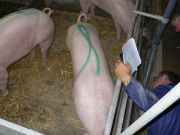

![越南非洲豬瘟疫苗蒙陰影 上百豬隻接種後死亡[轉貼]](data/attachment/block/3e/3e723490e252eebc3bc1a403febd226e.jpg)
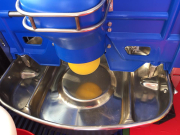
![[轉貼]從上市9頭到14頭 -- 我的養豬專業養成之路。](data/attachment/block/3c/3c17fd6b5c1b8cff34fdc7342238e082.jpg)


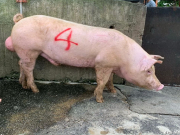
![[轉貼]這個倒霉王國,因為一隻老鼠慘遭滅國 .....](data/attachment/block/3f/3ffb7b6b8ec14613dc077bdd7603e3a5.jpg)
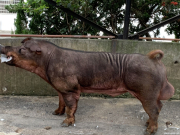


 IP卡
IP卡 狗仔卡
狗仔卡 [信息未更新]
[信息未更新] 發表於 2011-4-2 18:31:01
發表於 2011-4-2 18:31:01
 提升卡
提升卡 置頂卡
置頂卡 沉默卡
沉默卡 喧囂卡
喧囂卡 變色卡
變色卡 搶沙發
搶沙發 千斤頂
千斤頂 顯身卡
顯身卡 發表於 2011-4-2 20:21:23
發表於 2011-4-2 20:21:23


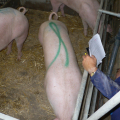

![越南非洲豬瘟疫苗蒙陰影 上百豬隻接種後死亡[轉貼]](data/attachment/block/d2/d2539d8909b33105a4f3e3b9b2e8a659.jpg)
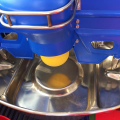
![[轉貼]從上市9頭到14頭 -- 我的養豬專業養成之路。](data/attachment/block/81/819f9b837f86a7e00498f8d95b8b9176.jpg)
